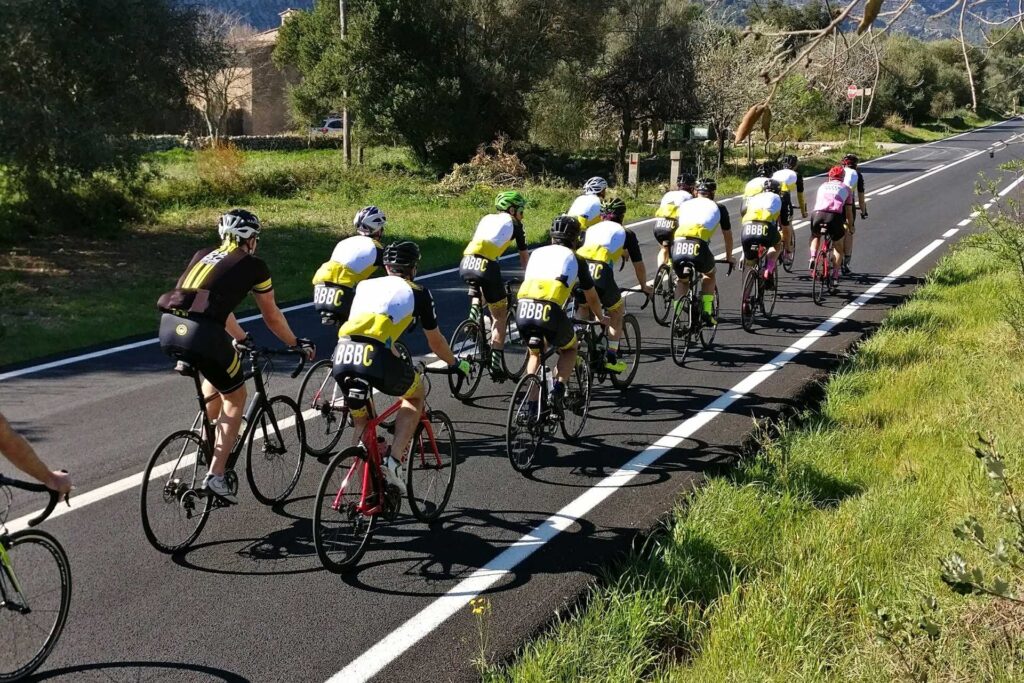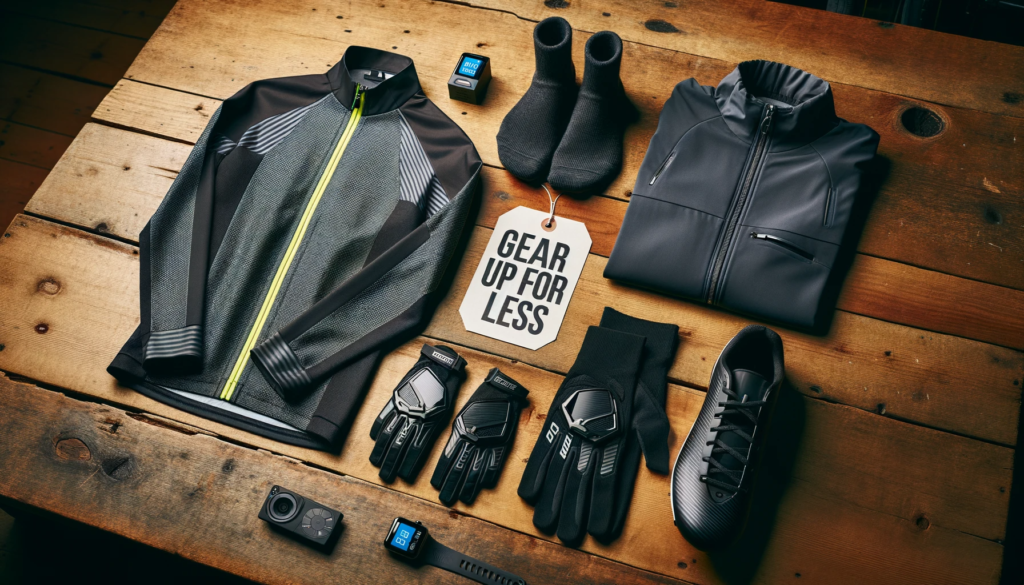To start a bicycle club, gather interested individuals, establish a mission, and organize regular rides. Are you passionate about cycling and want to share that passion with others?
Starting a bicycle club can be a great way to bring together like-minded individuals and create a community of cyclists. Whether you’re a seasoned cyclist or a cycling enthusiast looking to connect with others, starting a bicycle club can provide a platform for camaraderie, fitness, and exploration.
By following a few simple steps, you can establish a successful bicycle club that will attract members and create a shared sense of adventure on two wheels. So, let’s dive into the details of how to get your bicycle club up and running.
1. Planning And Preparation
Starting a bicycle club requires careful planning and preparation to ensure its success. This section will guide you through the key steps of establishing a bicycle club, from identifying its purpose and goals and defining the target audience, to establishing membership criteria.
1.1 Identifying The Purpose And Goals Of The Club
To set a strong foundation for your bicycle club, it is crucial to clearly identify its purpose and goals. This will help determine the direction and activities of the club, attracting like-minded individuals who share a common passion for cycling. Consider the following when defining the purpose and goals:
- What is the main focus of the club? Is it recreational cycling, competitive racing, or both?
- Are there specific cycling disciplines or interests that the club will specialize in, such as road cycling, mountain biking, or touring?
- What are the primary objectives of the club? Is it to promote cycling as a healthy lifestyle, build a supportive community, or participate in local cycling events?
By clearly outlining the purpose and goals of your bicycle club, you will be able to attract individuals who align with these values and aspirations, creating a stronger and more cohesive community.
1.2 Defining The Target Audience
To ensure the success and relevance of your bicycle club, it is important to identify and define your target audience. Consider the following factors when defining your target audience:
- What age group is your club catering to? Are you targeting young adults, families, or seniors?
- What is the skill level of your target audience? Are you catering to beginners, intermediate cyclists, or advanced riders?
- Are you targeting a specific demographic, such as women, students, or professionals?
Defining your target audience will help tailor your club’s activities, events, and communication efforts to appeal to the right cyclists. This will ultimately lead to higher engagement and participation within your community.
1.3 Establishing Club Membership Criteria
Establishing clear and concise membership criteria is essential to ensure that your bicycle club attracts members who are committed and aligned with the club’s purpose. Consider the following points when establishing membership criteria:
- What are the basic requirements to join the club? This could include owning a bicycle, meeting a minimum fitness level, or having a certain level of experience in cycling.
- Do you require members to pay a membership fee or adhere to a code of conduct?
- Are there any age restrictions or specific prerequisites for joining?
By setting clear membership criteria, you can ensure that all club members share a common interest in cycling and are dedicated to contributing positively to the club’s activities and goals.

Credit: www.yellowjersey.co.uk
2. Setting Up Operations
Setting up operations for your bicycle club is an important step in starting off on the right foot. From securing a location to organizing club activities, this guide will help you navigate the process smoothly.
Starting a bicycle club is an exciting and rewarding endeavor. To ensure a successful launch, it is essential to set up operations properly. This involves selecting a club name and logo, creating club bylaws, obtaining necessary permits and insurance, and securing funding and resources. In this section, we will delve into each of these steps in detail to help you kickstart your bicycle club on the right foot.
2.1 Choosing A Club Name And Logo
Before officially launching your bicycle club, it is crucial to choose a memorable and unique name that represents the essence of your group. Take some time to brainstorm and consider a name that aligns with your club’s values, mission, and the type of cycling you plan to engage in. The name should be descriptive yet catchy, making it easy for potential members to identify with your organization.
Once you have settled on a name, it’s time to create a captivating logo. The logo should be visually appealing, portraying the spirit of your club and the joy of riding bicycles. If you are not a graphic designer, you can hire a professional or use online tools to create a logo that reflects the personality and character of your club.
2.2 Creating Club Bylaws
Having a set of well-defined and structured club bylaws is essential for running your bicycle club smoothly. Bylaws act as a framework that outlines the rules, regulations, and procedures that govern your club’s activities. They ensure clarity and consistency in decision-making, conflict resolution, membership requirements, meetings, and other important aspects.
When creating club bylaws, consider including provisions such as membership criteria, responsibilities of club officers, code of conduct, guidelines for organized rides, safety rules, and processes for making amendments to the bylaws. It is crucial to involve your club members in the development of the bylaws to ensure everyone’s needs and perspectives are considered.
2.3 Obtaining Necessary Permits And Insurance
Before launching any official club activities, it is essential to ensure that you have all the necessary permits and insurance in place. This step ensures the safety of your club members and protects you from potential liabilities. Research the local requirements for organizing group rides or events and ensure you comply with any regulations or permits needed.
Additionally, it is crucial to obtain liability insurance that covers your club activities. Insurance coverage will protect your club and its members in case of accidents or injuries that may occur during rides or events. Consult with insurance providers specializing in recreational clubs or sports organizations to understand your options and choose the best coverage for your bicycle club’s needs.
2.4 Securing Funding And Resources
Securing funding and resources is an essential step in launching a successful bicycle club. Determine the financial requirements of your club and explore various options for funding. Consider organizing fundraising events, seeking sponsorships from local businesses or cycling-related companies, and reaching out to community organizations that may be interested in supporting your club’s mission.
Additionally, it is vital to gather the necessary resources to support your club’s activities. This may include bicycles, maintenance tools, safety equipment, club merchandise, and communication tools such as a website or social media presence. Reach out to bicycle manufacturers, retailers, and local community organizations to explore possible partnerships or donations for your club.
By following these steps for setting up operations, you will establish a solid foundation for your bicycle club. Remember, attention to detail and proper planning are key to attracting members, ensuring safety, and creating a thriving community of cyclists. With passion and dedication, your bicycle club will be on its way to fostering a love for cycling and bringing people together through the joy of riding.
3. Organizing Club Activities
Once your bicycle club is up and running, it’s time to start organizing various activities to keep your members engaged and the excitement alive. These activities not only provide opportunities for members to come together and enjoy their shared passion for cycling, but they also help to build a sense of community and camaraderie. In this section, we’ll explore three key aspects of organizing club activities: planning regular group rides, arranging club events and races, and engaging in social and community initiatives.
3.1 Planning Regular Group Rides
One of the simplest yet most effective ways to keep your bicycle club active is by planning regular group rides. These rides serve multiple purposes – they provide a chance for members to ride together, improve their skills, explore new routes, and strengthen their friendships. When planning group rides, consider the following:
- Frequency: Decide how often you want to organize group rides. It could be once a week, biweekly, or once a month, depending on the availability and preferences of your members.
- Distance and Difficulty: Take into account the skill levels and fitness of your members when determining the distance and difficulty level of the rides. Plan routes that cater to both beginner and experienced riders.
- Meeting Point and Time: Choose a central meeting point that is easily accessible for everyone. Set a specific time for the ride to ensure that all participants are on the same page.
- Communication: Utilize group communication channels, such as a dedicated WhatsApp group or email list, to inform members about upcoming rides, route details, and any changes or cancellations.
3.2 Arranging Club Events And Races
Organizing club events and races can take your bicycle club to a whole new level of excitement and competitiveness. Whether you want to host a time trial, criterium race, or a fun social event, careful planning is essential for a successful outcome. Consider the following when arranging club events and races:
- Event Type: Decide on the type of event you want to organize. Consider the preferences and abilities of your members, as well as the resources and permissions required.
- Location and Course: Choose a suitable location that offers safety, diversity, and challenge. Ensure that the course is well-marked and offers proper support, such as rest stops or first aid stations.
- Registrations and Fees: Determine if you need to have a registration process and associated fees. This will help you cover costs and manage participant numbers effectively.
- Volunteers and Support: Recruit volunteers from within the club or reach out to the cycling community. They can assist with tasks such as marshaling, timing, and providing support during the event.
3.3 Engaging In Social And Community Initiatives
Being involved in social and community initiatives not only showcases the positive impact your bicycle club can have but also fosters a sense of belonging among your members. Here are some ideas to engage in social and community initiatives:
- Collaborate with Local Organizations: Partner with local bike shops, cycling advocacy groups, or environmental organizations to promote cycling awareness, safety campaigns, or charity events.
- Organize Fundraisers: Arrange fundraising rides or events to support a cause that aligns with your club’s values. This can be a powerful way to give back to the community and attract new members.
- Participate in Community Events: Take part in local parades, festivals, or other community events as a group. It not only promotes your club but also encourages active participation in the community.
- Host Workshops or Training Sessions: Share your knowledge and skills by organizing workshops or training sessions for beginners or those interested in improving their cycling abilities.
By incorporating these various activities into your bicycle club’s schedule, you can create a vibrant and engaging environment that appeals to all members. Remember that versatility and inclusivity should be at the forefront of your planning process to ensure that everyone feels welcome and valued.
Frequently Asked Questions On How To Start A Bicycle Club
Faq 1: How Do I Start A Bicycle Club?
Starting a bicycle club can be exciting and rewarding. Begin by recruiting members who share your passion for cycling and organize regular group rides. Create a club mission statement and set goals to keep everyone motivated.
Faq 2: How Can I Promote My Bicycle Club?
Promote your bicycle club by word-of-mouth, social media, and local advertising. Create eye-catching posters, design a club logo, and organize community events to showcase your club. Utilize online platforms to reach a wider audience and attract new members.
Faq 3: How Do I Organize Group Rides?
Organizing group rides requires planning and communication. Set a meeting point, choose a scenic route, and ensure everyone understands safety guidelines. Use online tools, such as ride-planning websites or mobile apps, to streamline the process and keep everyone informed.
Faq 4: What Benefits Can A Bicycle Club Offer?
A bicycle club provides several benefits, such as a sense of community, opportunities to improve fitness levels, and access to expert advice. It also offers social connections, new friendships, and the chance to explore new cycling routes with like-minded individuals.
Faq 5: How Do I Foster A Welcoming Club Atmosphere?
To foster a welcoming club atmosphere, encourage open communication and provide support to riders of all levels. Organize social events, training sessions, and workshops to help members connect and learn from each other. Emphasize inclusivity and make everyone feel valued and accepted.
Conclusion
Starting a bicycle club is a great way to bring cycling enthusiasts together, promote a healthy lifestyle, and build a supportive community. By following the steps outlined in this blog post, you can successfully establish your own bicycle club. Remember to create a clear vision, recruit passionate members, plan engaging activities, and promote your club effectively.
With dedication and enthusiasm, your bicycle club will thrive and bring joy to all its members. So, hop on your bike and embark on this exciting journey today!




